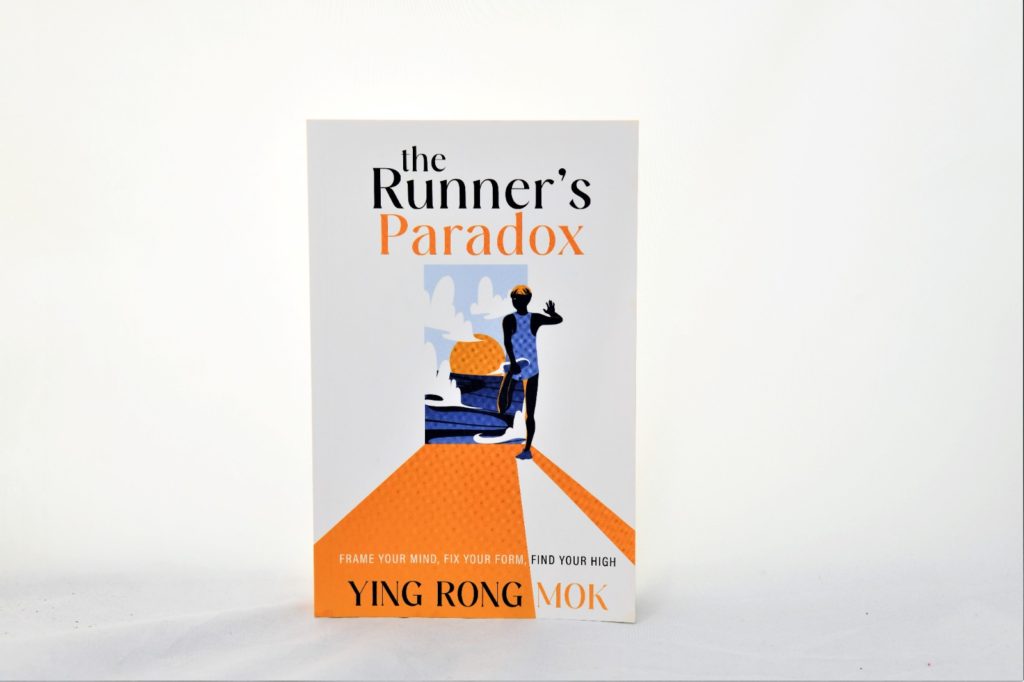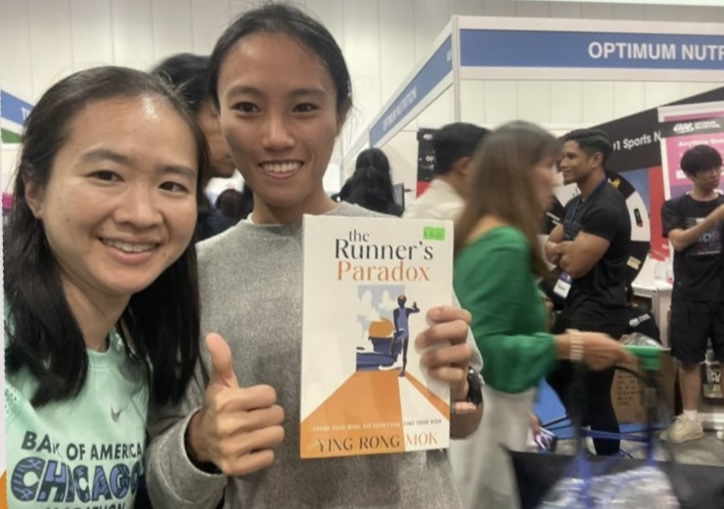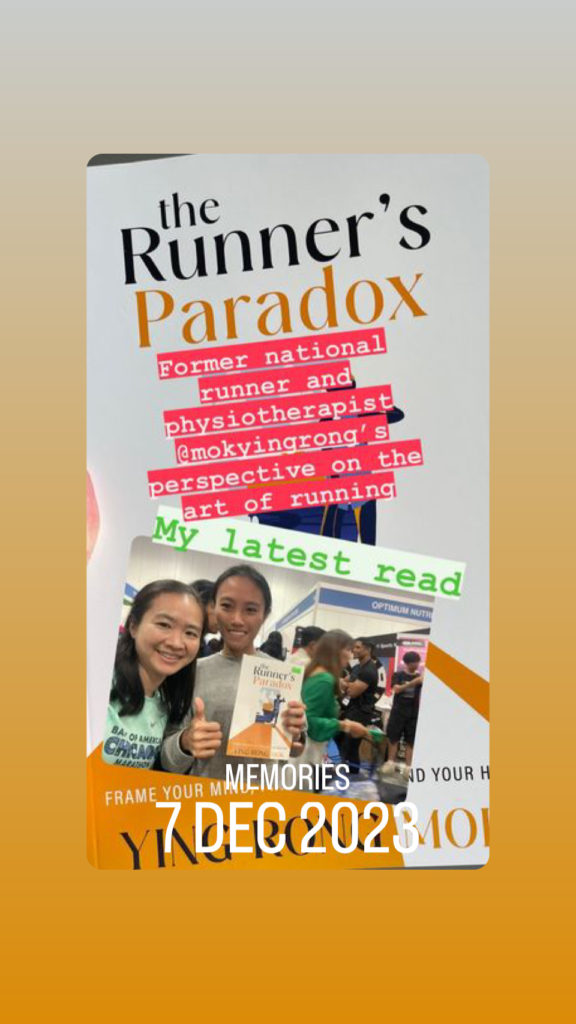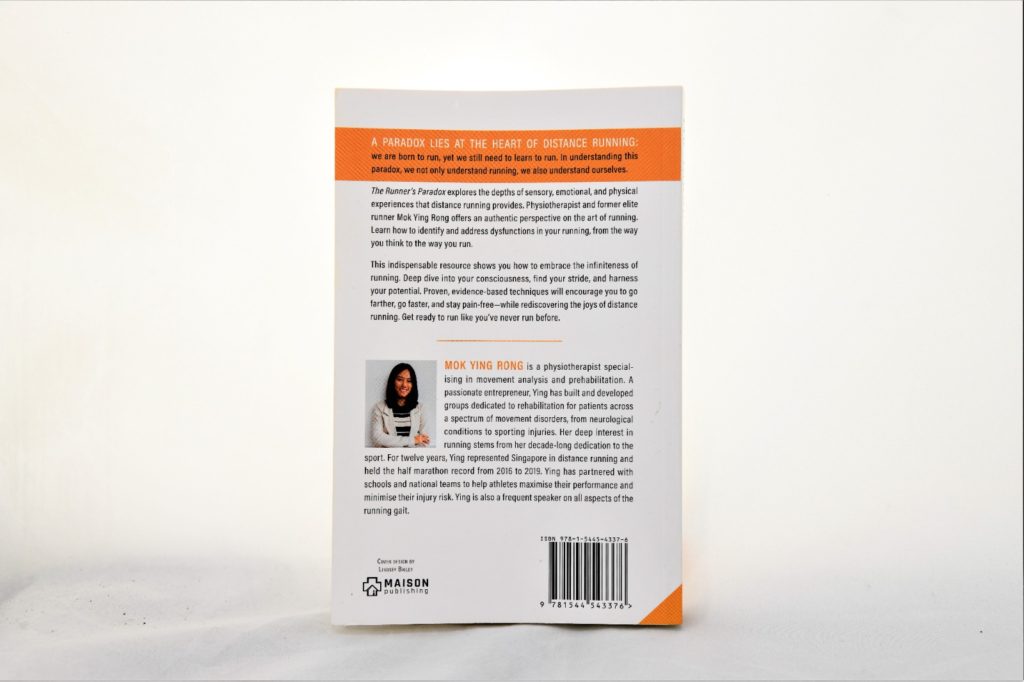The Runner’s Paradox explores the depths of sensory, emotional and physical experiences that distance running provides, from the viewpoint of physiotherapist and former elite runner Mok Ying Rong.
Offering her authentic perspective on the art of running, Ying shows readers how to embrace the infiniteness of running. With Ying, dive into your consciousness, find your stride and harness your potential to go farther, faster and stay pain-free. 
A physiotherapist specialising in movement analysis and prehabilitation, Ying’s interest in running comes from her decade-long dedication to the sport. She represented Singapore in distance running for 12 years and held the half marathon national from 2016 to 2019. Today, she is dedicated to helping other athletes maximise their performance and minimise their injury risk.
Ying’s book is broken into five parts that mirror the lessons she has learnt from her running career.
Within the five parts, she has structured her 356 page book like a marathon: comprising of 26.2 chapters with each chapter representing one mile of a marathon.
Ying said, “I started running like you: with the assumption that it was a simple sport, that I was born to do it.”
“Across the years of my competitive career, my experiences and my attitude changed, and I went through many of the struggles you may be facing. I write this book from a position of knowledge and empathy. I know your pain because I have lived it,” continued Ying. 
Ying’s own running career began in 2006 at the age of 13. She raced her first 10km event six months later, and began to coach herself. She kept improving rapidly and made a name for herself in the local running scene, finishing regularly on the podium and winning prize money.
However it wasn’t all a bed of roses. Ying came crashing back to earth at the 2015 Singapore Marathon where she failed to achieve her goal of qualifying for the Olympics despite putting her career on hold and dedicating herself to training full-time in Colorado, USA.
This was the turning point in her career where her mindset towards running shifted and she began to see and experience the sport from fresh angles.
Ying called time on her professional career in 2019 but today she continues to run for the fun of it.
Her book looks at the love-hate relationship that many runners have with running, as she herself went through it. This, to her, is considered the paradox of running.
For example, we dread the tough training sessions and the early morning alarms, yet we love the high of completing a well-executed workout or hitting our targets for a key race – and sign up for another race the next day.
I myself can certainly attest to the truth in this. At the 32km mark of every marathon I run, I find myself questioning my sanity and asking myself why I pay good money to do this to myself. Yet I am addicted to the high of crossing the finish line. I can’t stop running. I will still sign up for another marathon.
I dread having to do the long runs and the tough interval sessions when I am preparing for a marathon, but again, the long hours and the intensity all feels worth it in the end when I cross that finish line.
Explained Ying, “How can running feel like the most natural thing in the world, yet you still struggle to do it? As I learned, the answer to that question is at the heart of the runner’s paradox: yes, we are born to run, and yet we still need to learn how to run.”
I may not be anywhere close to Ying’s level in running, but as a distance runner myself, I felt like I can relate to a lot of the points she brought up.
Over the 10 plus years I have been running, I can also attest that I have experienced the love-hate relationship with running. I have both good days and bad days, I have experienced injuries and I have felt burnt out due to over running. This too, really made me take a step back and reflect on my running, my goals and what I really want out of this sport. As well, the lessons she learnt can relate a lot to me as well.
Tapping on her physiotherapy background, Ying also looks into the dynamics of running as being something that is supposedly what we are born to do, yet we still need to learn the proper form and techniques. She teaches readers simple exercises they can do to prevent or reduce injuries, and how to strengthen their running form and gait.
I am reminded of my own running deficiencies and how this led to me suffering from compartment syndrome in 2014.
Compartment syndrome is a chronic overtraining injury that is caused when repetitive exercise results in swelling of one of the muscle compartments, resulting in the muscles pressing against the fascia and causing pain. This pain kept me out of running for three months, and I had to re-learn my running gait form in order to run again without pain.
In her book, Ying also teaches us how to recognise ineffective movement patterns and how to correct these before actual injuries crop up. This is known as prehabilitation and if I had been aware of this prior to getting injured in 2014, it would definitely have helped me avoid a lengthy layoff from running for three months. We all love running and we don’t want to get injured; Ying’s physiotherapy background offers insights into how you can make both of these become realities. 
Overall I feel that Ying’s book is an interesting and informative read for distance runners everywhere.
It offers an engaging read from the mind and perspective of a former national runner who used to run for her country, and shows that she is human, that she too has her fears and insecurities just like you and me.
Though common folk like you and me are not at her level, we can truly relate to a lot of the points she brings up as a fellow distance runner.
The Runner’s Paradox by Mok Ying Rong is available at her website at https://www.therunnersparadox.com
Head online to download a free sample or purchase a copy now. Each copy of her book retails at S$36.

It will be my must-read for 2024.
Glad to hear that!! 😀